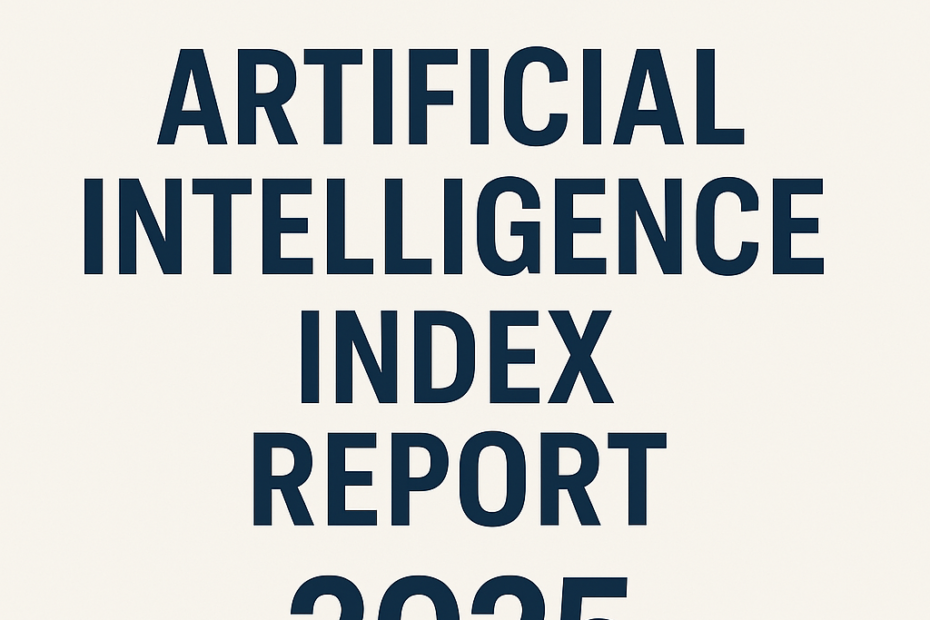The AI Index Report 2025 provides a comprehensive overview of the artificial intelligence landscape, highlighting key trends in research and development, including industry leadership in model creation and academia’s strength in highly cited publications. The report examines technical performance across various AI domains like language, vision, and reasoning, noting the emergence of more challenging benchmarks and innovative reasoning paradigms. It also focuses on responsible AI, discussing the uneven progress in its ecosystem, the rise of AI incidents, and increasing governmental interest in governance frameworks. Furthermore, the report analyzes the economic impact of AI, including investment, hiring trends, and corporate adoption, while also exploring AI’s growing role in science and medicine, showcasing advancements in protein science, clinical care, and drug discovery. Finally, it examines policy and governance efforts globally and public opinion surrounding AI technologies, offering a multifaceted perspective on the current state and future trajectory of AI.
Listen to the podcast:
AI Index Report 2025 – Executive Summary
The 2025 edition of the AI Index, published by Stanford’s Institute for Human-Centered AI, provides the most comprehensive snapshot yet of the global AI landscape. As AI continues its rapid integration into society, business, science, and governance, this report highlights both the advances and the challenges of the past year.
Key Highlights:
Explosive Growth in AI Capabilities: AI systems made major leaps in benchmark performance—up to 67 percentage point increases on SWE-bench—and in domains like video generation and programming, sometimes outperforming humans in time-constrained tasks.
Widespread Adoption and Investment: In 2024, private AI investment reached a record $252.3 billion, with the U.S. accounting for nearly half. Corporate AI use surged, with 78% of businesses adopting AI, up from 55% the prior year.
Geopolitical Shifts: While the U.S. leads in notable model development (40 in 2024), China dominates AI publications and patents, and its models are now nearly equal in performance on benchmarks like MMLU and HumanEval.
Responsible AI Lags Behind: Despite rising AI-related incidents and bias concerns, industry RAI (Responsible AI) practices remain inconsistent. New benchmarks like HELM Safety and AIR-Bench aim to improve evaluations.
Public Sentiment Evolves: Global optimism about AI is rising, particularly in Asia, though trust in AI companies continues to decline. Concerns about bias, deepfakes, and misinformation persist, especially around elections.
Scientific and Medical Impact: AI-enabled devices approved by the FDA soared to 223 by 2023. New models like AlphaFold 3 advanced protein folding, and GPT-4 outperformed doctors in some diagnostic tasks.
Efficiency and Accessibility: The cost of running a GPT-3.5-level model dropped 280-fold in 18 months. Smaller models now rival massive ones, with a 3.8B parameter model achieving what once required 540B.
Environmental Trade-offs: While AI hardware is becoming more efficient, emissions from training state-of-the-art models like Llama 3.1 now exceed 8,900 tons of CO₂—nearly 500 times that of GPT-3.
Policy and Regulation Surge: Governments are acting—U.S. federal agencies issued 59 AI-related regulations in 2024, and global AI infrastructure investment skyrocketed, including Saudi Arabia’s $100B initiative.
Educational Challenges: Two-thirds of countries now support K–12 CS education, but teachers report being unprepared to teach AI. The U.S. saw a surge in AI master’s degrees, suggesting growing future capacity.
Conclusion: The 2025 AI Index illustrates that AI is no longer about future possibilities—it’s a present-day force reshaping every sector. But progress brings complexity: governance, ethics, and equitable access must keep pace with technical advancement.
